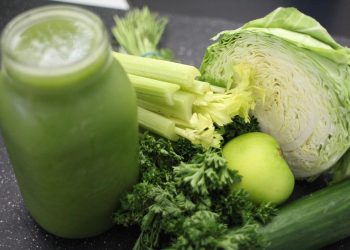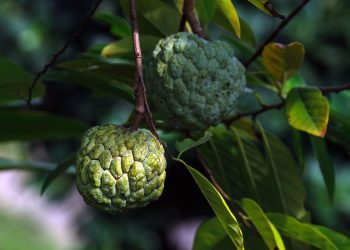Pain can be a relentless adversary, but did you know there are herbs that relieve pain naturally? Nature offers us a treasure trove of remedies that can ease discomfort without the side effects often associated with pharmaceuticals. Let’s explore seven surprising herbs that might just become your new best friends in the battle against pain.
Contents
Understanding Natural Pain Relief
When we talk about natural pain relief, we refer to methods that rely on the healing properties found in plants. These herbal remedies have been used for centuries in various cultures and are gaining attention in modern wellness circles. By turning to these herbs, you not only take charge of your health but also embrace a holistic approach to well-being.
Why Choose Herbs for Pain Relief?
- Fewer Side Effects: Unlike conventional pain relievers, herbs often come with minimal side effects.
- Holistic Healing: Many herbs address the root cause of pain rather than just masking the symptoms.
- Accessibility: Most herbs can be found in local markets or online, making them easy to incorporate into your routine.
1. Turmeric
Let’s kick things off with turmeric, a vibrant yellow spice that’s more than just a pretty face in your curry.
The Power of Curcumin
Turmeric contains curcumin, a compound known for its potent anti-inflammatory properties. Research suggests that curcumin can help alleviate pain from conditions like arthritis and muscle soreness.
- How to Use It: Add turmeric to your meals, brew a warm turmeric tea, or take curcumin supplements.
- Dosage: Aim for about 500mg to 2,000mg of curcumin daily.
For more insights on turmeric’s benefits, check out Healthline’s article.
2. Ginger
Ginger is not just a zesty addition to your dishes; it also packs a punch against pain.
Why Ginger Works
Rich in gingerol, ginger has anti-inflammatory and analgesic properties. Studies show that ginger can be effective in reducing pain related to osteoarthritis and menstrual cramps.
- How to Use It: Enjoy ginger tea, add fresh ginger to smoothies, or take ginger supplements.
- Dosage: About 1–2 grams of ginger per day can be beneficial.
For an in-depth look at ginger’s potential, visit WebMD.
3. Willow Bark
You might not have heard of willow bark, but it’s been used for centuries as a natural pain reliever.
Nature’s Aspirin
Willow bark contains salicin, which is similar to the active ingredient in aspirin. It’s particularly effective for headaches, back pain, and osteoarthritis.
- How to Use It: Take willow bark in tea form or as a supplement.
- Dosage: 60-120 mg of salicin per day is generally recommended.
To learn more about willow bark, check Mayo Clinic’s insights.
4. Peppermint
You might associate peppermint with fresh breath, but this herb has more to offer than just a minty flavor.
Cooling Relief
The menthol in peppermint can provide a cooling sensation, which helps soothe headaches and muscle aches. It also works wonders for digestive discomfort.
- How to Use It: Sip on peppermint tea, inhale peppermint essential oil, or apply diluted oil to sore areas.
- Dosage: For tea, 1-2 cups daily is effective.
For further reading on peppermint’s benefits, visit National Center for Complementary and Integrative Health.
5. Boswellia
Boswellia, or Indian frankincense, is an ancient herb known for its powerful anti-inflammatory effects.
Joint Pain Relief
Research indicates that boswellia can help manage pain from arthritis and other inflammatory conditions.
- How to Use It: Available in capsules or as a topical cream.
- Dosage: Around 300-500 mg of boswellia extract taken two to three times daily.
Discover more on boswellia’s uses at Cleveland Clinic.
6. Feverfew
Feverfew is a flowering plant that has been used for centuries, primarily for migraine relief.
Migraines No More
Studies show that feverfew can help reduce the frequency and severity of migraines.
- How to Use It: Available in fresh, dried, or supplement form.
- Dosage: 50-100 mg daily is typically effective.
For more information on feverfew, check out NCCIH’s page.
7. Cayenne Pepper
Cayenne pepper brings the heat, but it also holds a secret weapon against pain.
Capsaicin’s Magic
The active compound in cayenne, capsaicin, is known for its ability to reduce pain by desensitizing nerve endings.
- How to Use It: Apply capsaicin cream to painful areas or incorporate cayenne into your meals.
- Dosage: For topical use, look for creams with 0.025% to 0.075% capsaicin.
Learn more about cayenne pepper’s benefits at WebMD.
Bottom Line
Natural remedies can be powerful allies in your quest for pain relief. By incorporating these herbs that relieve pain naturally into your life, you can tackle discomfort head-on. Remember to consult with a healthcare provider before starting any new supplements, especially if you’re on medication or have underlying health conditions.
Embrace the healing potential of these herbs, and take charge of your well-being. Your body deserves it!
FAQ
1. Are herbs safe to use alongside other medications?
Always consult your healthcare provider before mixing herbal remedies with medications.
2. How long does it take for these herbs to work?
Results can vary. Some may experience relief within days, while others might take weeks.
3. Can I use these herbs for chronic pain?
Yes, many of these herbs are suitable for chronic pain management, but it’s essential to discuss this with a healthcare professional.
Take that first step towards a pain-free life. You’ve got this!
Get Your FREE Natural Health Guide!
Subscribe now and receive our exclusive ebook packed with natural health tips, practical wellness advice, and easy lifestyle changes — delivered straight to your inbox.















